In Japanese culture, flowers are more than just pretty decorations. They carry deep meanings that are important in social and spiritual life. Hanakotoba, or the language of flowers, shows how these symbols are part of everyday life and traditional events. These flowers make you think about how their meanings shape and reflect the way Japanese people see the world. It’s interesting to dive deeper into their cultural importance and the stories they tell.
Significance of Flowers in Japanese Culture
In Japanese culture, flowers are really important. They show up in everyday life and during special events. There’s something called Hanakotoba, or the language of flowers, where people use flowers to say things they might not put into words. It’s a big part of how people interact and connect with each other in Japan.
Then there’s Ikebana, the art of arranging flowers. It’s not just about making things look nice. It’s about reflecting on nature and what it teaches us about harmony, peace, and beauty. Arranging flowers this way is also about showing respect and caring, and it’s used in both private and public ceremonies to honor and remember others.
Popular Traditional Japanese Flowers and Their Meanings
Sakura (Japanese Cherry Blossom)
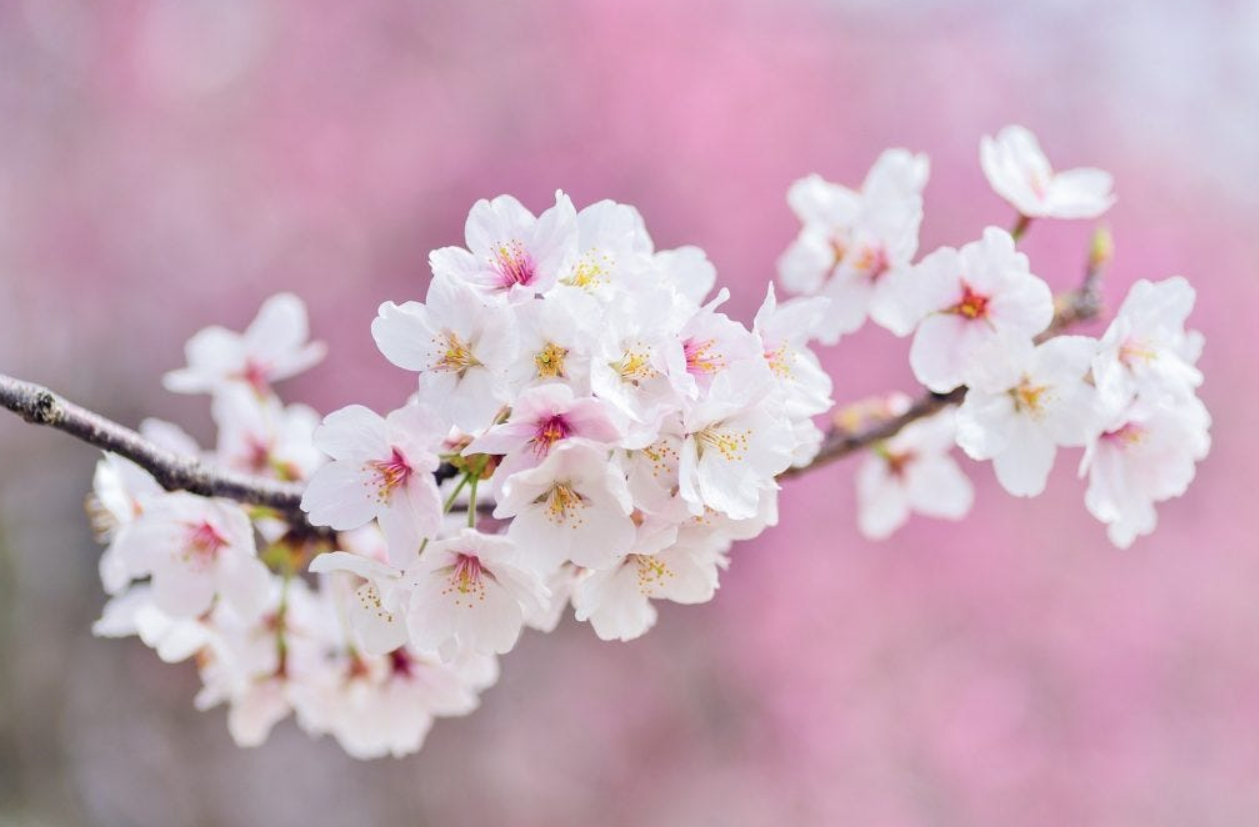
Sakura, or Japanese cherry blossoms, show us the beauty and shortness of life. They bloom beautifully in spring, but their beauty doesn’t last long. In Japan, these flowers are a big deal. They stand for hope and new beginnings but also remind us that nothing lasts forever. This idea is called mono no aware, which means being aware of how temporary life is.
Every year, people in Japan have a tradition called Hanami. During Hanami, families and friends hang out under cherry trees in full bloom. It’s more than just looking at pretty flowers. It’s a time to think about life and enjoy the moment. This tradition helps people appreciate what they have right now, because like the blossoms, it won’t last forever.
Kiku (Chrysanthemum)
The chrysanthemum, or ‘kiku’ in Japanese, is a powerful symbol in Japan. It stands for long life and renewal, and it’s especially important to the imperial family. Every year on September 9th, during the Festival of Happiness, people celebrate this flower. It’s one of the five major seasonal festivals and highlights the chrysanthemum’s role in promoting health and protecting against evil.
In Japan, gardeners have created over 350 types of chrysanthemums. Each type showcases the pursuit of perfection and the beauty of nature, which is also celebrated in ikebana, the Japanese art of flower arranging.
The chrysanthemum is so important that it appears on the Imperial Seal of Japan and even on Japanese passports, showing its deep ties to the monarchy and the cultural values of the nation.
Tsubaki (Camellia)
We’ve moved from the well-loved chrysanthemum to another important flower in Japan: the Tsubaki, or Camellia. This flower is key in hanakotoba, which is like a floral language in Japan where each color of a flower has a special meaning.
The red camellia stands for a noble death, often linked to samurai or warriors, showing their readiness to die with honor. On the other hand, the white camellia means waiting, representing the virtue of patient anticipation.
These flowers are not just pretty; they carry deep meanings in cultural ceremonies and rituals. The Tsubaki symbolizes both beauty and the fleeting nature of life.
Ume (Japanese Apricot or Plum Blossom)
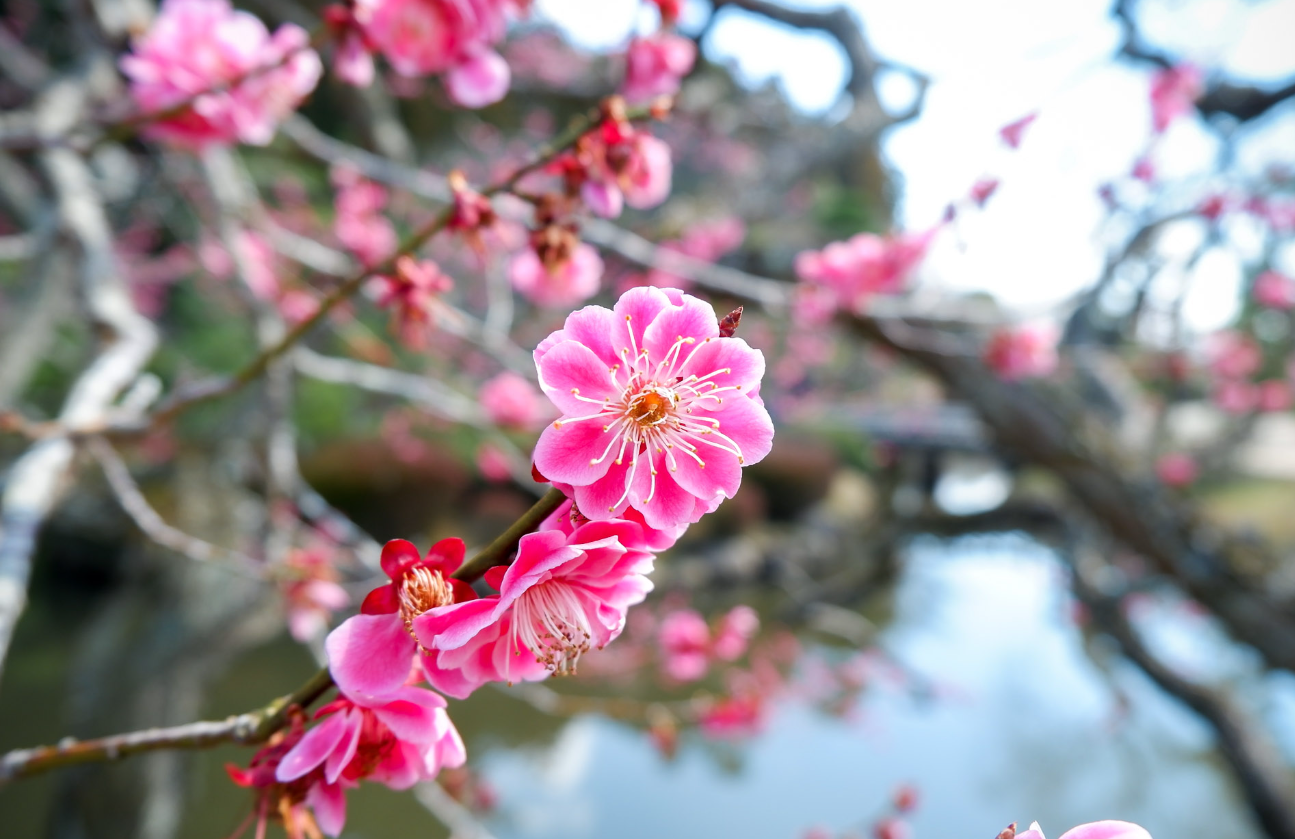
Ume, or Japanese Apricot, is famous for its early spring flowers. It stands for loyalty, grace, and tough spirit. Blooming before the cherry blossoms, ume’s petals vary from white to deep pink, signaling winter’s end and the coming of warmer days. In Japan, ume means more than just spring. It symbolizes strength and starting anew.
The Kairakuen Garden’s Plum Blossom Festival has always been celebrated ume. This festival still draws thousands who come to enjoy its beauty and fragrance. Ume is also a big deal in Japanese poetry, often appearing in haiku to capture nature’s fleeting beauty.
Shobu (Iris)
In Japanese culture, the iris, or Shobu, is more than just a flower. It stands for mental strength, safety, and good news. Why do samurais connect with it? Its sharp leaves look a lot like swords, showing martial skill and noble character.
On Children’s Day, previously known as Tango no Sekku, this flower takes center stage. It’s a time when families cheer on the growth and success of their kids, especially boys, hoping they grow strong and successful.
When it comes to Japanese flower arranging, known as Ikebana, the iris is a favorite. Its colors—purples, blues, and whites—speak of bravery and good vibes.
Ajisai (Hydrangea)
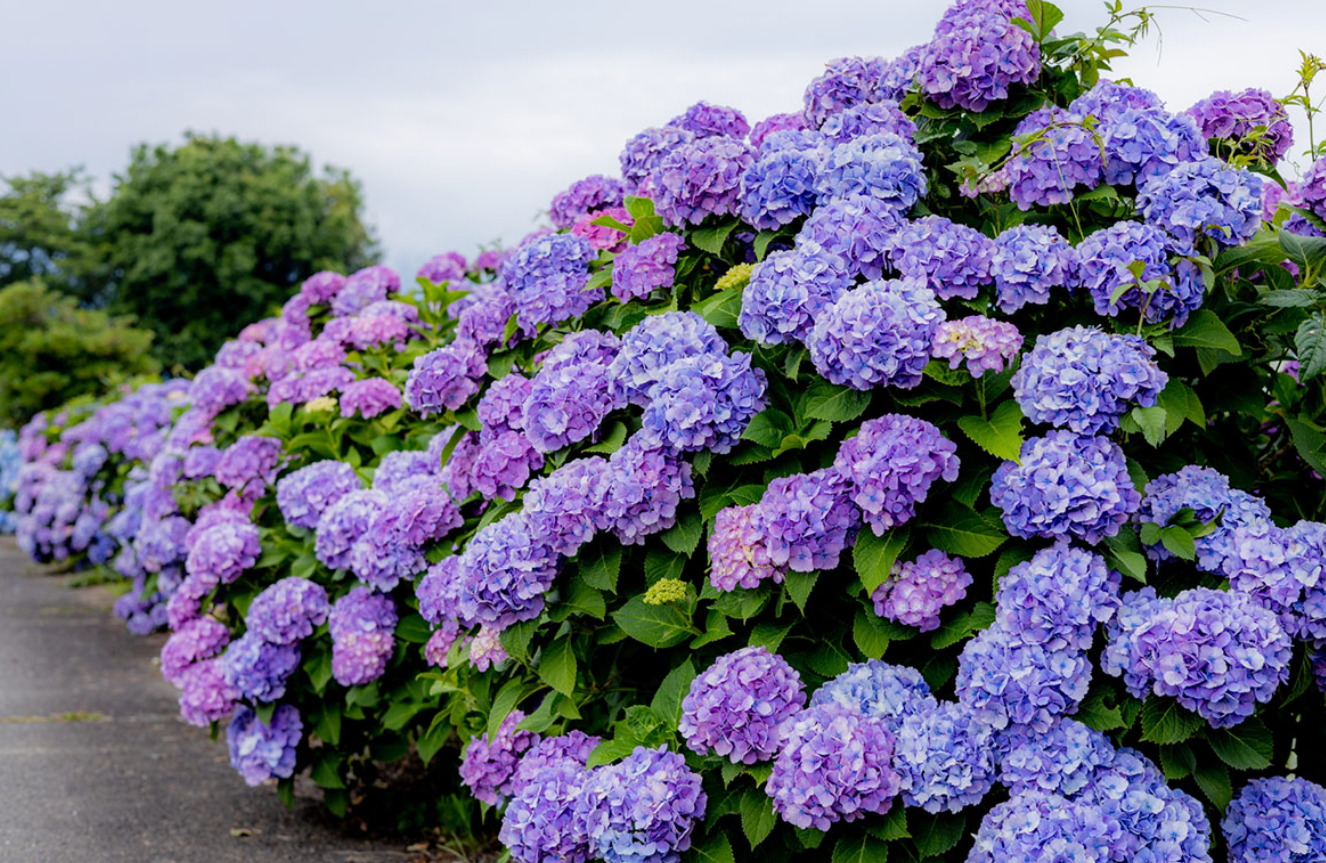
Hydrangeas, or ajisai, are beloved in Japan for their big, colorful blooms that stand for deep feelings and saying sorry. These flowers fill gardens and temples with blue, pink, and purple during the rainy season.
Each color means something different: blue for saying thanks or sorry, pink for strong feelings, and purple for wanting to understand more. The cool thing about hydrangeas is how their colors can change with the soil’s acidity. It’s like how people’s feelings can change depending on what’s happening in their lives.
Because they can adapt and they look full and round, hydrangeas are a favorite in Japanese ikebana, which is the art of flower arranging.
Hasu (Lotus)
The lotus, or ‘Hasu’ in Japanese, is deeply respected. It stands for enlightenment and purity. Imagine this: the lotus grows in muddy water but blooms spotlessly. It shows us that we can rise above our struggles, just like it does. People in Japan see the lotus as a symbol of spiritual awakening. You’ll often see it in art or by temples, sparking thoughts about overcoming life’s challenges and seeking enlightenment.
In Japanese culture, the lotus is not just a plant; it’s a reminder. It tells us that no matter where we start, we can reach high, stay clean, and be beautiful inside out. This idea is a big deal in Japanese gardens and artwork, inviting everyone to think and admire how tough yet graceful life can be.
Flowers with Special Symbolic Meanings
Himawari (Sunflower): Adoration and Loyalty
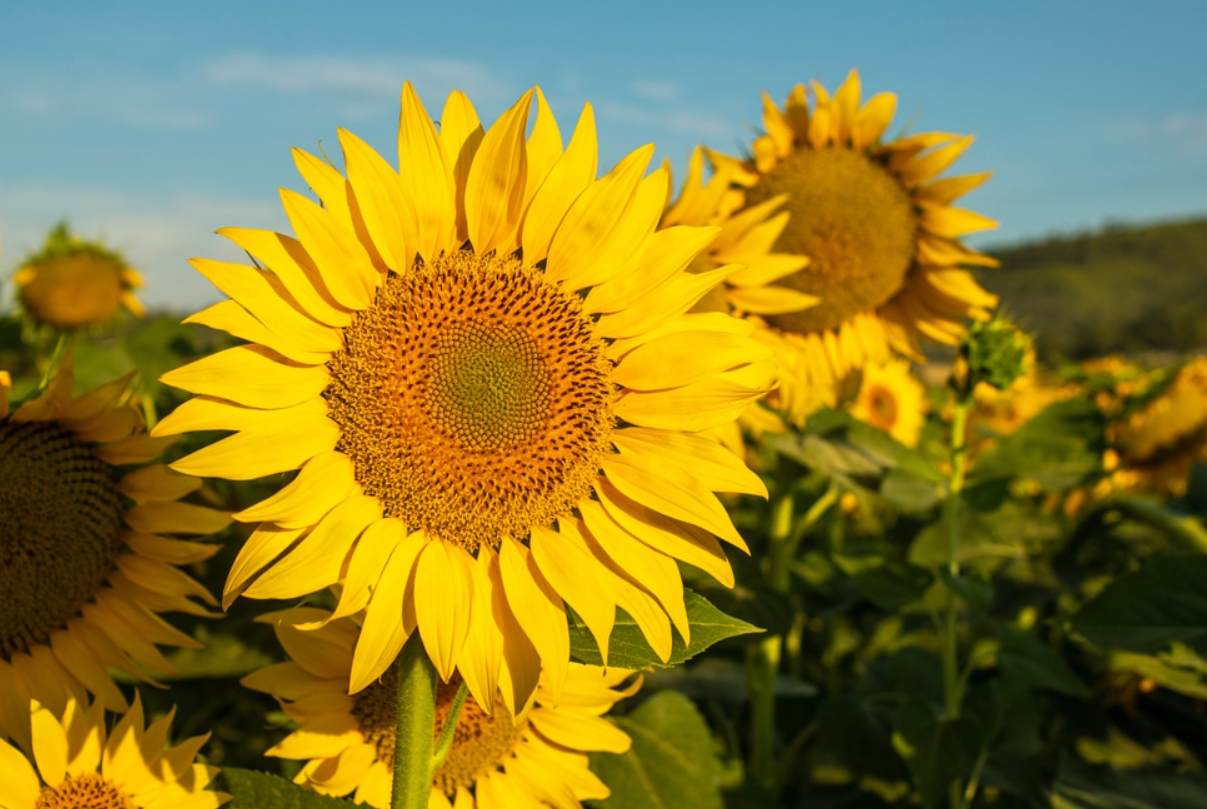
Sunflowers, or Himawari, are important in Japanese culture. They stand tall and bright, symbolizing adoration and loyalty. In Hanakotoba, the Japanese language of flowers, sunflowers represent respect, passion, and faithfulness.
People often give them as gifts to show admiration and deep affection. They’re perfect for celebrations or just sharing a heartfelt moment. Sunflowers bloom in the summer, reminding us of the sun’s energy and life’s vibrancy. They teach us to be enthusiastic and dedicated, following our paths like they follow the sun.
Kinmokusei (Orange Osmanthus): Nobility
Kinmokusei, or Orange Osmanthus, is known for its sweet smell and stands for nobility in Japan. This flower, with bright orange petals, is linked to high social status, often seen with the elite.
It blooms in the quiet fall, reminding us of the season’s beauty and the deep values of respect and honor. Having Kinmokusei in your garden shows good taste and a deep connection to Japanese traditions.
People love its scent so much that it’s used in perfumes and incense, making it a valued and noble flower in Japanese culture.
Higanbana (Red Spider Lily): Final Goodbyes
While Kinmokusei smells sweet and feels noble, Higanbana (Red Spider Lily) has a different vibe. It’s known for its deep red flowers and is tied to saying goodbye and the shortness of life. You’ll see these flowers bloom in the fall along riverbanks and near rice fields, a perfect fit for the often gloomy themes in Japanese poetry and art during this season.
There’s a legend that these flowers guide the souls of the dead to their next life. That’s why you won’t find them at happy occasions like weddings. Instead, they’re a common sight at funerals and memorial services. Their bold look and link to death make them both striking and a bit sad—a powerful symbol in Japanese culture.
Fuji (Wisteria): Longevity and Love
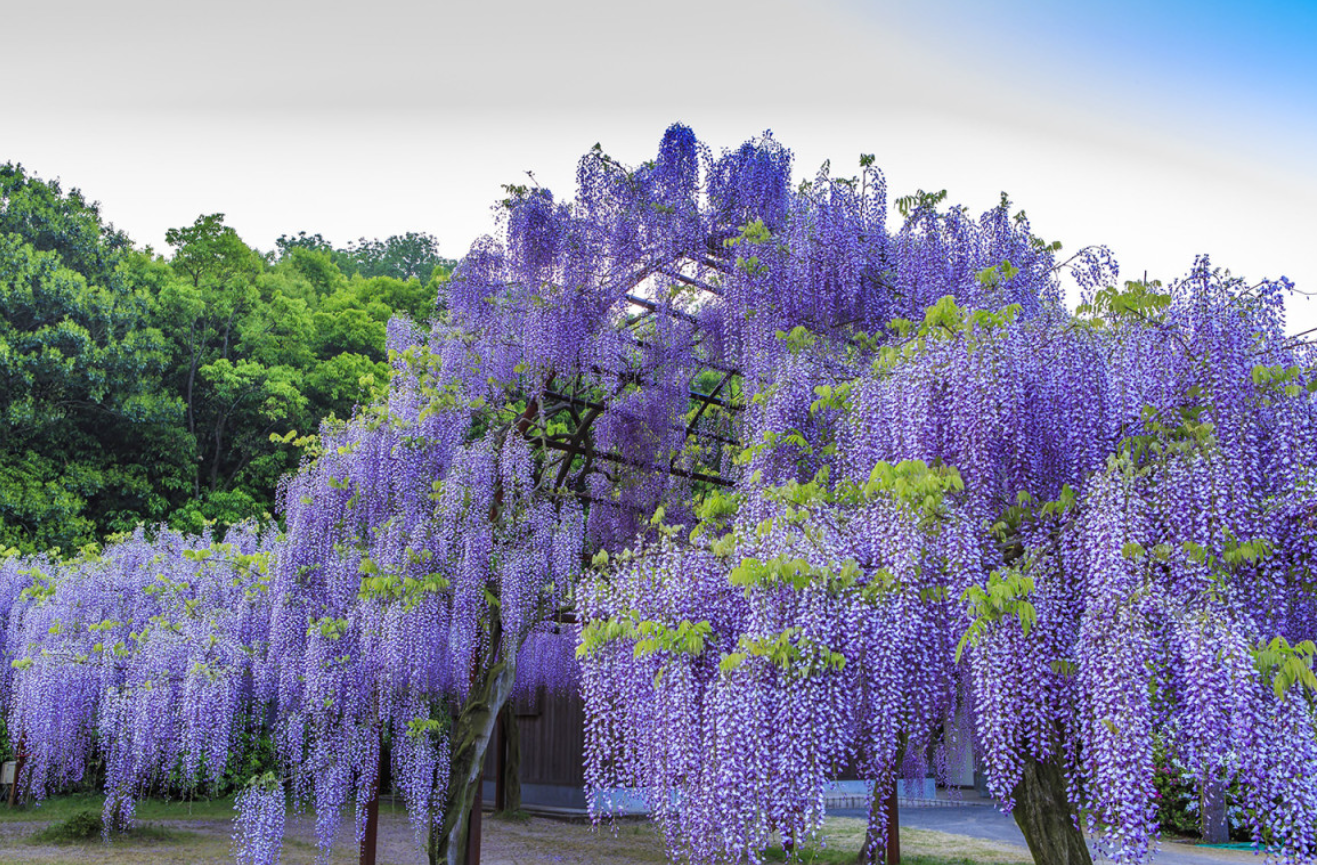
Wisteria, or Fuji as it’s called in Japanese, means a lot in Japan. It stands for long life and lasting love. You often see this beautiful, flowing plant in Japanese gardens. It represents elegance and how time passes. Since wisteria is so tough and lives a long time, people think of it as a symbol of strong, enduring love and patience.
This flower isn’t just pretty; it pops up a lot in art, poems, and festivals, showing it’s more than just a nice view. For example, the Wisteria Festival at Ashikaga Flower Park is a big deal. It draws people from all over with its stunning scenes, reminding everyone of lasting love and life’s fleeting beauty.
Sumire (Violet): Sincerity and Small Happiness
In Japanese culture, the violet, or Sumire, stands for truth and simple joys. This flower is important in Hanakotoba, the Japanese language of flowers. It means honesty and the kind of happiness that makes everyday life better.
You’ll often see Sumire in Japanese gardens, from deep purple to pale lilac, showing strong, true feelings quietly. People like to give violets in thank-you bouquets because they show gratitude simply and beautifully.
Seasonal Significance of Flowers
Hanashobu (Japanese Iris) in Spring
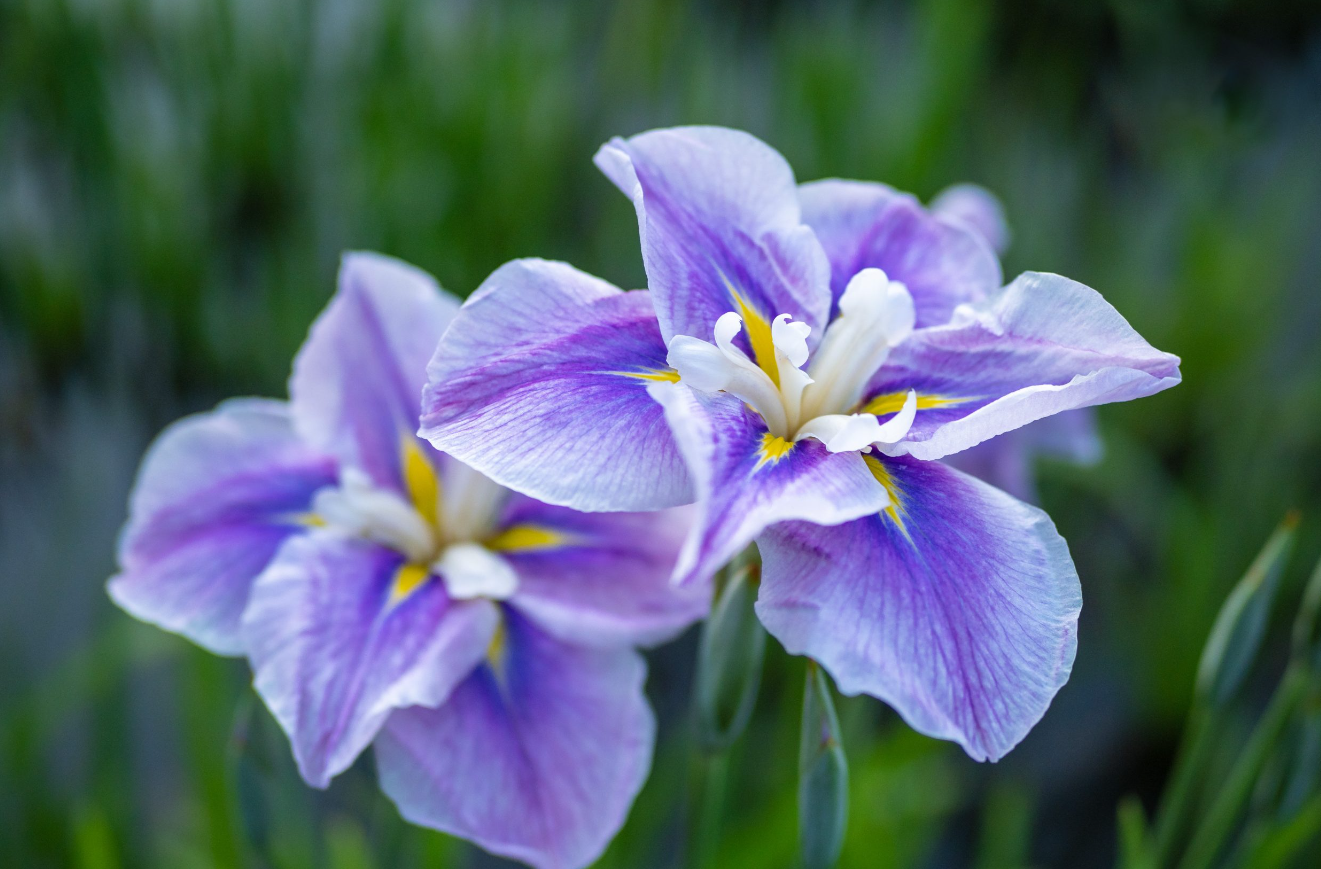
When spring begins in Japan, the Hanashobu, or Japanese Iris, starts to bloom. It’s known for its deep purple color and sharp leaves. More than just a beautiful flower, the Hanashobu holds deep cultural importance. It’s a big part of Boys’ Day, a festival celebrating young boys’ growth and success. The flower stands for the strength and values of samurai, which shows why it’s so valued in Japanese culture.
The Hanashobu often grows near water and is seen as a symbol of purity and protection against evil. This makes it a popular choice in Japanese garden design. It’s not just about looking good; it’s about deeper meanings.
Also Read: 38 Romantic Ways To Say ‘I Love You’ In Japanese
Asagao (Morning Glory) in Summer
Morning Glory, also known as Asagao, signals the start of summer in Japan. Its vibrant, trumpet-shaped flowers come in blues, purples, and whites, and are more than just a feast for the eyes. In the language of flowers in Japanese culture, these blooms stand for love and the desire to connect with others.
They appear from early summer to autumn, their brief life reminding us that nothing lasts forever. This is a core idea in Japanese thought, called mono not aware, which means recognizing the beauty in the fleeting nature of things.
Every year, the bright and delicate Asagao reminds us that each new summer is a chance to start fresh.
Kosumosu (Cosmos) in Autumn
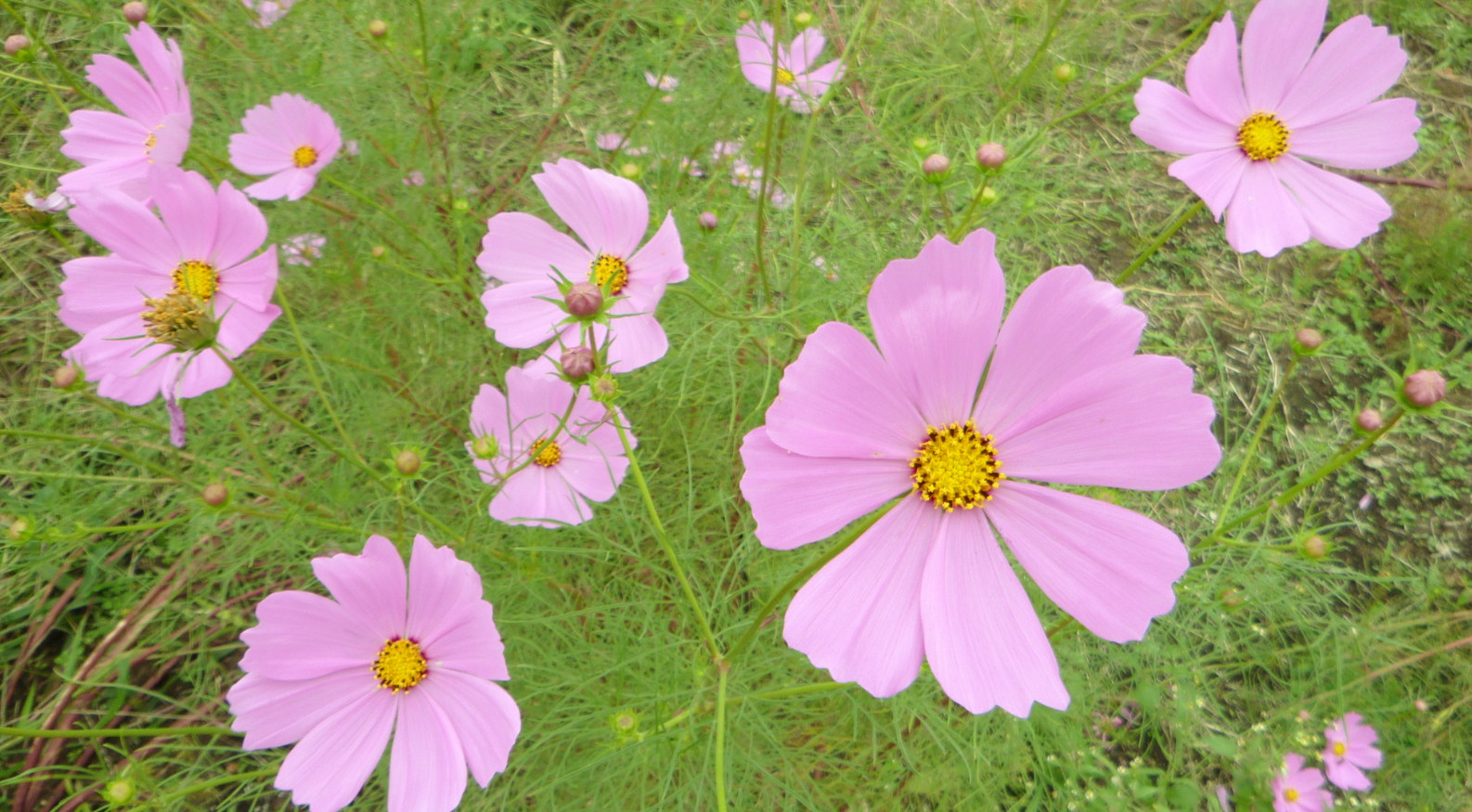
As autumn rolls in, the bright Kosumosu (Cosmos) flowers blanket the Japanese landscape. These flowers aren’t just pretty; they hold a special place in Japanese culture, symbolizing order and harmony. They pop up just as the seasons shift, marking a time of year that’s big on festivals and reflection in Japan.
The sight of cosmos swaying in the cool autumn wind brings a calm feeling of change and reminds us that nothing lasts forever. This is a core idea in Japan, known as ‘mono no aware’—a term that points out the beauty and sadness of fleeting moments.
Seeing these flowers each year doesn’t just make the scenery prettier. It also weaves deeper into Japan’s cultural story, giving everyone a moment to pause and soak in the peace of the season.
Suisen (Daffodil) in Winter
As winter sets in, the Suisen, or Daffodil, stands out. It’s tough, blooming through snow and cold soil. This isn’t just about flowers showing up; it’s a sign that spring is close.
In Japan, where people really value nature’s fleeting beauty and tough spirit, the Suisen is special. It’s more than a hint that winter is ending. It’s a symbol of hope and staying strong even when times are tough.
Also Read: 25 Unique Ways To Say “Goodbye” In Japanese
Unique Floral Traditions in Japan
Hanami (Flower Viewing)
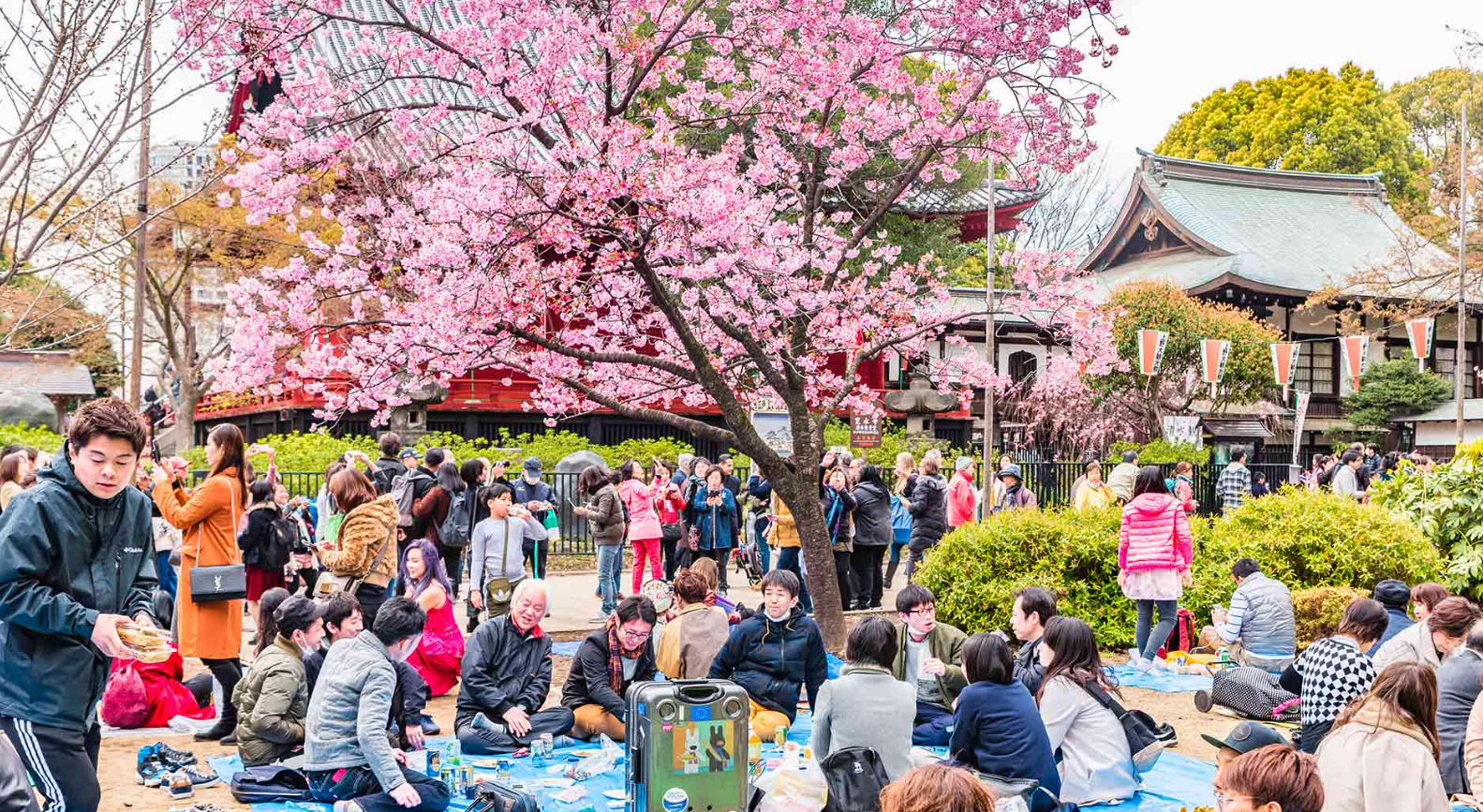
Every spring in Japan, people celebrate the cherry blossom season with the Hanami festival. It’s a big deal because cherry blossoms, or sakura, are a reminder that beauty and life don’t last forever.
So, families, friends, and coworkers get together under these blooming trees. They hang out, eat, drink, and really take in the moment. This tradition isn’t just about looking at flowers; it’s a time to connect with others and think about the bigger picture of life.
Hanami shows how deeply the Japanese feel connected to nature. It’s more than just a festival—it’s a way to see life and beauty through a clearer lens.
Ikebana (Flower Arrangement)
Ikebana, or Japanese flower arranging, turns a simple bunch of flowers into a work of art. It started back in the 7th century and is all about creating harmony and beauty using flowers, stems, and leaves. This art isn’t just for decoration; it’s deeply philosophical, often linked to Zen Buddhism, and focuses on being minimal and reflective.
Each Ikebana piece is more than just an arrangement; it’s seen as something alive, a blend of nature and human touch. There are many different schools and styles of Ikebana, each with its own set of rules and ways of expressing things, showing how culturally significant and personal this art form is.
Conclusion
To put it simply, traditional Japanese flowers are more than just pretty to look at. They carry deep meanings that show different aspects of life and culture in Japan. These flowers do a lot. They mark the changing seasons, and they help express feelings that can be hard to put into words. When you learn about these flowers and what they represent, you get a real sense of Japan’s rich culture and deep thinking. It’s all about how nature and culture come together, creating a beautiful and meaningful language of flowers. Keep visiting the Translation blog for more translation articles. Keep visiting the Translation Blog for more translation articles.

